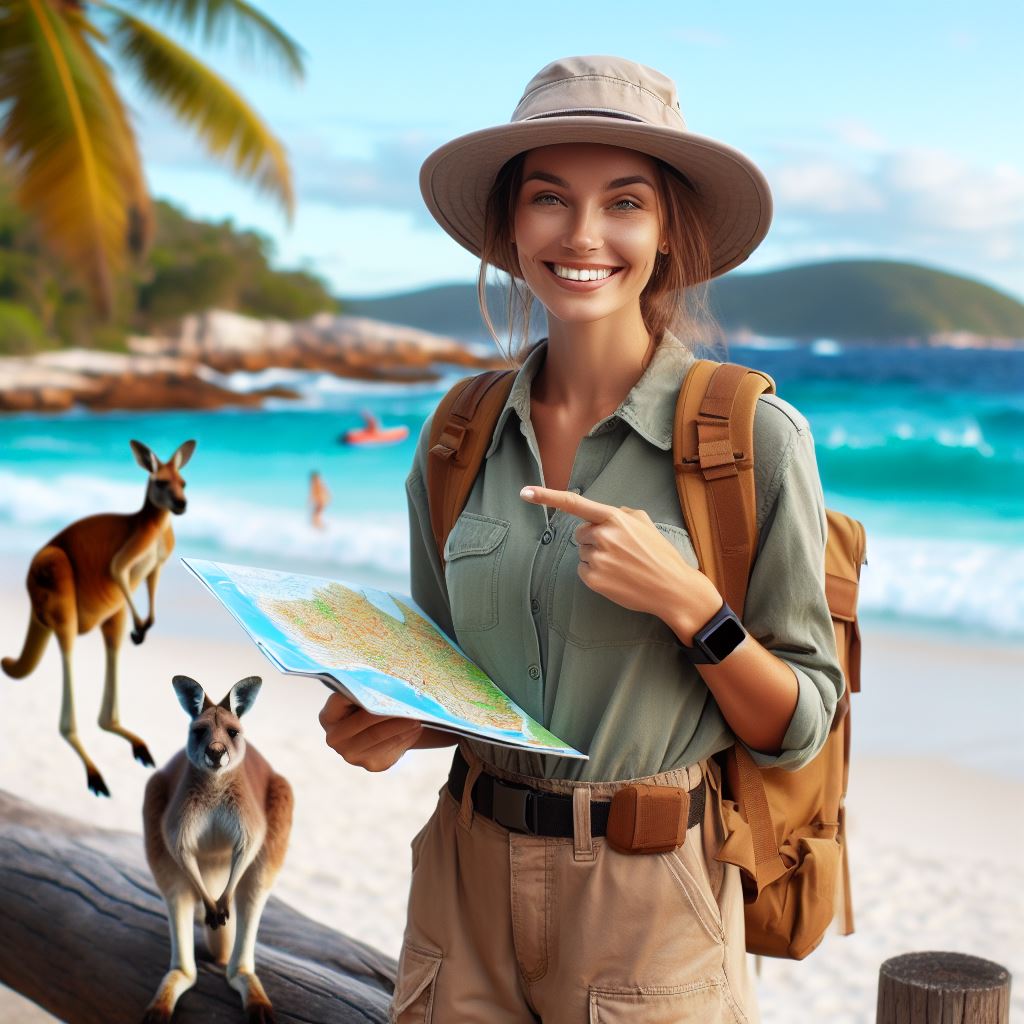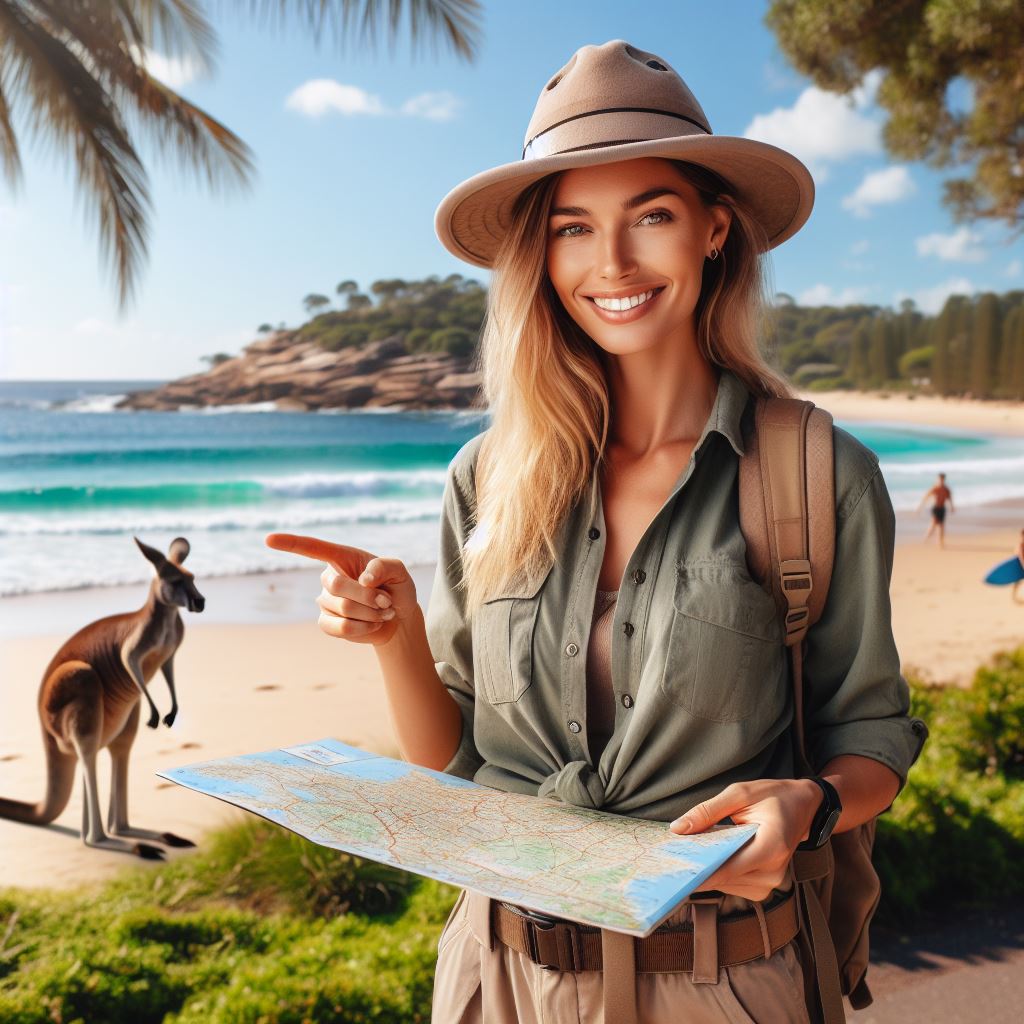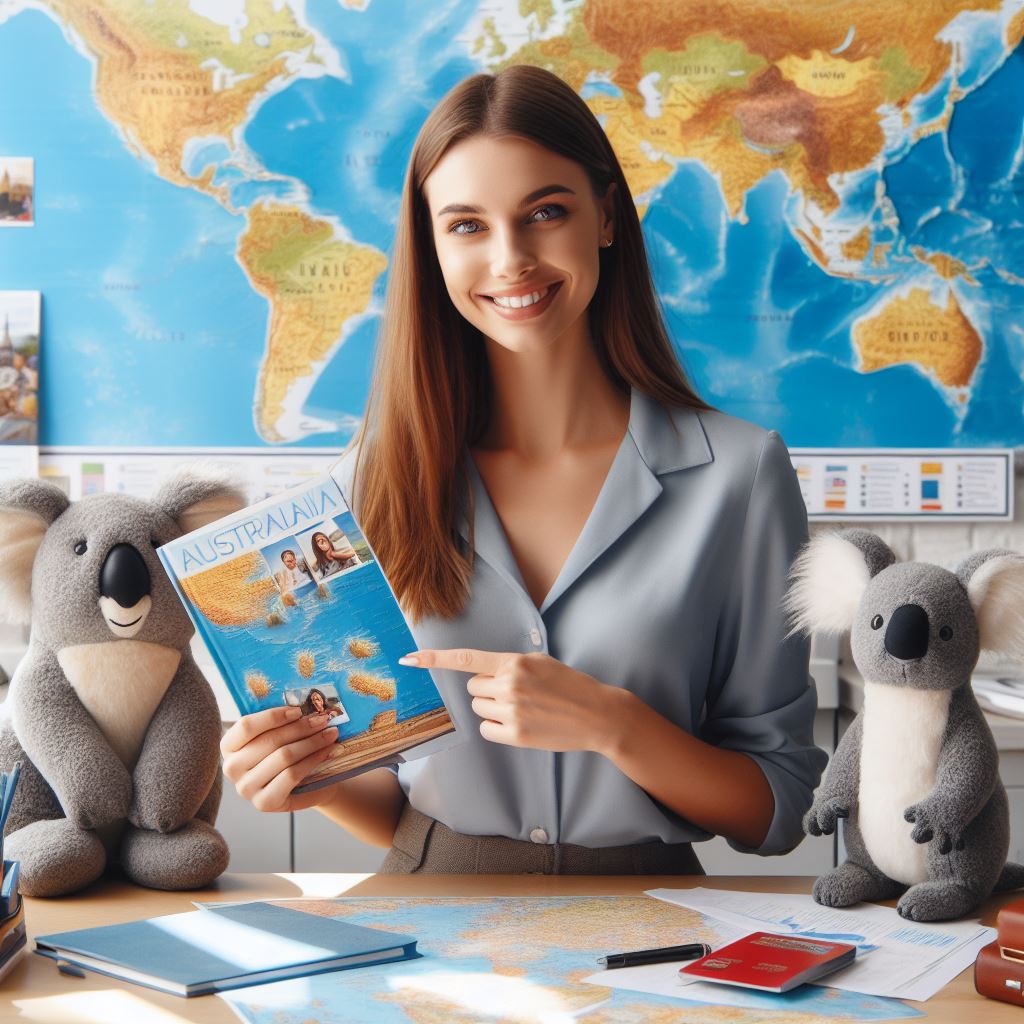Introduction
In the tapestry of today’s globalized world, the significance of tourism transcends mere leisure; it stands as a vibrant thread weaving cultures, economies, and experiences together.
The surge in international tourists underscores this global phenomenon, highlighting the profound impact of travel on individual lives and the broader interconnectedness of nations.
Tourism serves as a conduit for cultural exchange, economic growth, and fostering mutual understanding.
The escalating numbers of international tourists embarking on journeys to explore diverse landscapes and immerse themselves in unfamiliar cultures are a testament to the universal allure of exploration.
However, amid the excitement of cross-cultural encounters, a pervasive challenge persists – language barriers.
These linguistic hurdles often pose intricate challenges during tours, hindering seamless communication and potentially dampening the immersive experience for tourists.
The dynamic interplay between diverse languages, while enriching, necessitates strategic solutions to ensure that the beauty of cultural exchange is not lost in translation.
This blog delves into the multifaceted realm of tourism, recognizing its pivotal role in our interconnected world.
As we navigate the nuances of this global phenomenon, we shine a spotlight on the escalating numbers of international tourists and the transformative power of their journeys.
Simultaneously, we address the common challenge of language barriers, exploring proactive approaches to enhance communication and elevate the overall tourist experience.
Join us on this exploration where we unravel the layers of importance woven into the fabric of tourism, celebrating the diverse tapestry of cultures and the shared experiences that transcend borders.
In the world of tourism, language barriers can have a significant impact on the experience of both guides and tourists. These barriers can lead to communication difficulties, limited understanding of local culture and history, and missed opportunities for interaction and engagement.
The Impact of Language Barriers on Tours
Communication difficulties between guides and tourists
One of the most immediate impacts of language barriers in tours is the difficulty in communication between guides and tourists.
When a guide and tourists do not share a common language, it becomes challenging to convey important information, instructions, and explanations. This can result in frustration and confusion for both parties involved.
Moreover, misunderstandings can arise when trying to communicate basic needs and preferences, such as dietary restrictions or medical allergies.
Without proper communication, guides might struggle to provide satisfactory services and meet the expectations of tourists.
Limited understanding of local culture and history
Language barriers also limit tourists’ understanding of the local culture and history. Guides often play a crucial role in providing insights and explanations about significant landmarks, traditions, and customs.
However, when tourists are unable to understand the language used by the guide, they miss out on valuable information and experiences.
For example, imagine visiting a historical site without understanding the significance behind its architecture or the stories related to its past.
This lack of understanding prevents tourists from fully appreciating the cultural and historical aspects of the tour, resulting in a less enriching experience overall.
Missed opportunities for interaction and engagement
Language barriers can also hinder opportunities for interaction and engagement between guides and tourists. When there is a lack of mutual comprehension, it becomes challenging to establish meaningful connections and rapport.
Tourists may hesitate to ask questions or seek clarification, fearing the language barrier will make communication difficult.
Similarly, guides might have difficulty gauging tourists’ interests and preferences, making it challenging to personalize the tour experience.
Furthermore, language barriers can limit tourists’ interactions with locals, as they might struggle to communicate and engage in conversations with people they encounter during the tour.
This limits the opportunities for cultural exchange and learning from local residents, thereby diminishing the overall travel experience.
In fact, language barriers have a significant impact on tours. They create communication difficulties between guides and tourists, limit understanding of local culture and history, and result in missed opportunities for interaction and engagement.
In order to overcome these challenges, it is important to employ strategies such as providing multilingual guides, offering language interpretation services, or utilizing technology for real-time translations.
By addressing language barriers, tours can become more inclusive, informative, and enjoyable for all participants.
Read: The Rise of Female Chefs in Australia’s Kitchens
Strategies for Overcoming Language Barriers
Language barriers can pose challenges in the tourism industry, hindering effective communication and interaction between tourists and tour guides.
However, by implementing various strategies, these barriers can be overcome, allowing for better experiences and greater cultural understanding during tours.
Pre-Tour Preparations
- Language selection for tour guides plays a crucial role in minimizing language barriers. Hiring tour guides who are fluent in multiple languages enables them to communicate effectively with a diverse range of tourists.
- The availability of multilingual tour materials is equally important. By ensuring that brochures, maps, and other informational materials are translated into different languages, tour operators can cater to the linguistic needs of tourists, making them feel more comfortable and engaged.
- Training and resources for language skills improvement are essential for tour guides. Providing language training programs and resources can help them enhance their language proficiency, enabling them to communicate more effectively with tourists from various backgrounds.
Communication Techniques during Tours
- The use of visual aids, gestures, and body language can greatly assist in overcoming language barriers. Visual cues and non-verbal communication can help convey messages and enhance understanding, making the tour experience more engaging and inclusive.
- Simplifying complex information is crucial when communicating with tourists who may have limited language proficiency. Breaking down complex concepts and using simpler terms ensures that the message is clear and easy to understand, regardless of the tourists’ language skills.
- Encouraging questions and feedback from tourists is key to addressing language barriers. By creating an open and supportive environment, tour guides can actively engage with tourists, clarify any misunderstandings, and provide additional information as needed.
Integration of Technology
- Language translation apps or devices can be valuable tools in overcoming language barriers. These technologies enable real-time translation, allowing tour guides and tourists to communicate effectively despite not speaking the same language.
- Providing multilingual audio guides or tour apps can enhance the tour experience. These tools offer recorded audio explanations in multiple languages, ensuring that tourists can understand the information provided at their own pace.
- The use of signposting and visual cues is another effective way to overcome language barriers. Clear and easily understandable signage, symbols, and visuals can help tourists navigate and comprehend their surroundings, even if they cannot understand the local language.
Engagement with Local Communities
- Collaborating with local interpreters or translators can make a significant difference in bridging language gaps. Local language experts can accompany tour guides and provide on-the-spot translation, ensuring smooth communication between tourists and locals.
- Involving locals in cultural demonstrations or performances adds a unique dimension to the tour experience. By showcasing local traditions, arts, and customs, tourists can gain a deeper understanding of the culture, even without relying solely on verbal communication.
- Facilitating spontaneous conversations between tourists and locals allows for meaningful cultural exchange. Encouraging interactions in which tourists can engage with locals and learn about their customs and daily lives can foster mutual understanding and appreciation.
By implementing these strategies, tour operators can successfully navigate language barriers, ensuring that tourists enjoy enriching experiences regardless of their linguistic backgrounds.
Effective communication, cultural exchange, and inclusive tour experiences are essential for creating a positive and memorable journey for all tourists.
Read: Eco-Friendly Travel: Agents Leading the Way
Explore Further: Sustainable Practices for Hotel Managers
Your Personalized Career Strategy
Unlock your potential with tailored career consulting. Get clear, actionable steps designed for your success. Start now!
Get StartedCommon Challenges and Solutions
When it comes to navigating language barriers in tours, there are several common challenges that tour guides may face. However, with the right strategies and approaches, these challenges can be overcome.
Dealing with dialects and accents
One of the biggest challenges faced by tour guides is communicating with tourists who speak different dialects or have strong accents.
To overcome this challenge, it is important to speak slowly and clearly, ensure non-verbal communication is understood, and use visual aids whenever possible.
Additionally, providing written materials or using translation apps can also help bridge the gap between different dialects and accents, ensuring that the information is effectively communicated to all participants.
Adapting to different learning styles
Not all individuals learn in the same way, and this can pose a challenge when dealing with language barriers. To cater to different learning styles, tour guides can incorporate various techniques such as visual aids, hands-on activities, and interactive discussions.
Furthermore, using gestures, body language, and miming can enhance understanding, especially for those who are visual or kinesthetic learners.
By tailoring the tour to accommodate different learning styles, the language barrier can be minimized, allowing participants to fully engage and comprehend the information.
Creating a supportive and inclusive environment
Language barriers can often make tourists feel excluded or left out. To create a supportive and inclusive environment, tour guides should encourage interaction among participants, facilitate group conversations, and promote teamwork.
In addition, assigning bilingual participants as language buddies can help bridge communication gaps and foster a sense of inclusivity.
This way, individuals who are struggling with the language can rely on their language buddy for assistance and feel more comfortable participating in the tour.
Importance of empathy and cultural sensitivity
Empathy and cultural sensitivity are essential when dealing with language barriers in tours. Tour guides should be patient, understanding, and respectful towards participants’ diverse backgrounds and languages.
By showing empathy and cultural sensitivity, tour guides can create a safe space for individuals to feel comfortable asking questions, seeking clarification, and expressing themselves.
This not only enhances the overall tour experience but also promotes cultural exchange and appreciation.
While language barriers can present challenges in tours, tour guides can successfully navigate them by employing various strategies and approaches.
By addressing dialects and accents, adapting to different learning styles, creating a supportive environment, and embracing empathy and cultural sensitivity, tour guides can ensure a positive and inclusive experience for all participants.
It is important to remember that language should never be a hindrance to exploring and appreciating different cultures.
With effective communication techniques, cultural understanding can be achieved, fostering connections and enriching the tour experience for everyone involved.
Read: The Rise of Female Chefs in Australia’s Kitchens

You Might Also Like: Australian Cooks: Salary Expectations 2024
Case Studies: Successful Examples
Tourism companies implementing effective language barrier strategies
- Aussie Adventures Pty Ltd: Hired bilingual tour guides to assist non-English speaking customers.
- Down Under Explorers: Developed a mobile app with real-time translation for visitors to communicate with guides.
Positive impact on tour experiences and customer satisfaction
- Aussie Adventures Pty Ltd’s language strategy increased customer engagement and understanding.
- Down Under Explorers’ app allowed visitors to ask questions and receive immediate responses, enhancing their experience.
Case Study 1: Aussie Adventures Pty Ltd
Aussie Adventures Pty Ltd recognized the importance of overcoming language barriers in providing exceptional customer service. They decided to invest in bilingual tour guides who could effectively communicate with non-English speaking customers.
Stand Out with a Resume That Gets Results
Your career is worth more than a generic template. Let us craft a resume and cover letter that showcase your unique strengths and help you secure that dream job.
Get HiredBy having tour guides fluent in multiple languages, Aussie Adventures Pty Ltd accommodated visitors from diverse backgrounds. These guides were able to break down language barriers, facilitating clear communication throughout the tour.
The implementation of this strategy positively impacted the tour experiences of non-English speaking customers. They felt more included and engaged as the guides were able to provide detailed explanations and answer their questions.
This not only enhanced their understanding but also increased their satisfaction with the tour.
Case Study 2: Down Under Explorers
Down Under Explorers took a different approach to address language barriers. They developed a mobile app that provided real-time translations for visitors.
The app allowed them to ask questions and receive immediate responses from the tour guides, bypassing the need for a shared language.
This innovative approach had a significant positive impact on the tour experiences of non-English speaking customers. They no longer felt restricted by their language limitations and could actively participate in discussions and activities.
This resulted in improved customer satisfaction as visitors could fully engage with the tour and gain a deeper understanding of the attractions.
These case studies demonstrate the importance of implementing effective language barrier strategies in the tourism industry.
Both Aussie Adventures Pty Ltd and Down Under Explorers successfully navigated language barriers and significantly improved tour experiences and customer satisfaction.
By hiring bilingual tour guides, Aussie Adventures Pty Ltd created an inclusive environment where non-English speaking customers felt heard and understood. Their strategy fostered engagement and enhanced the overall tour experience.
Similarly,Down Under Explorers’ mobile app provided real-time translations, empowering non-English speaking visitors to actively participate in tours.
This innovative solution eliminated language barriers and allowed for meaningful interactions, resulting in greater customer satisfaction.
Tourism companies should learn from these successful examples and prioritize overcoming language barriers to ensure a positive and inclusive experience for all customers.
By embracing strategies that effectively bridge language gaps, tour companies can create an environment that welcomes and caters to visitors from different linguistic backgrounds.
Read: Travel Agents: Trends in Australia for 2024
Conclusion
Overcoming language barriers in tours is crucial for a successful and inclusive tourism experience.
By ensuring effective communication, tourists feel welcomed and understood, enhancing their overall experience.
Language barriers can be overcome through the use of translation services, multilingual tour guides, and language-learning tools.
It is important for the tourism industry to continuously improve and invest in language support resources.
By doing so, they can cater to a wider audience, making travel accessible and enjoyable for everyone.
Transform Your LinkedIn for Maximum Impact
Elevate your professional brand with a LinkedIn profile that attracts recruiters, showcases your expertise, and maximizes opportunities. Stand out in your industry with a profile built for success.
Boost ProfileInclusive and accessible tourism experiences benefit all stakeholders, including tourists, tour operators, and local communities.
They foster cultural understanding, boost the economy, and contribute to sustainable and responsible tourism practices.
Therefore, it is crucial to promote and prioritize inclusive and accessible tours in the industry.
By working together, tour operators, local communities, and tourists can create a more inclusive and welcoming travel environment for all.
Let us embrace the diversity of languages and cultures, and make language barriers a thing of the past in the world of tourism.




